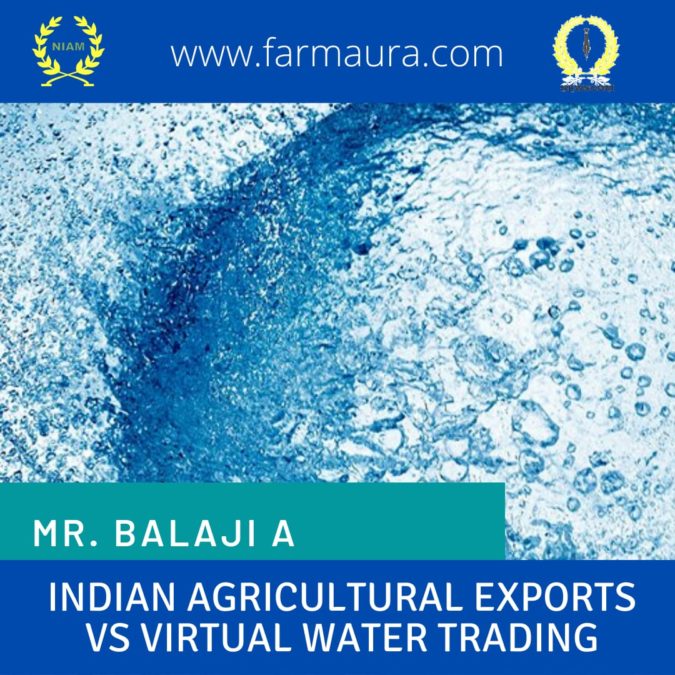
India’s Agrarian culture and multivariable climate is always supported on self as well as the global food basket.
Certain Indian agricultural commodities are in more demand on the global market due to their significance. India’s agriculture exports steadily increased by 7 times. The key players for an increase in exports of the current financial year are wheat (67.2% increase), vegetable oil (25.8%), other cereals (24.5%), molasses (14.1%) and non-Basmati rice (13.2%) spices, cotton raw, oil meals, sugar, castor oil, and tea. In terms of value in Crores, it has reached 2.69 lakh crores which has generated a good volume of money for the nation. But here is where we need to look at this progress with the newer perspective and dimension rather than the traditional manner.
Let us start from scratch on Virtual Water Trading, which is defined as the water required for the production of goods. Virtual water trade refers to the export of hidden water in the form of products such as crop products, textiles, machinery, and livestock — all of which require water for their production. Current Water scenario – India is suffering from one of the world’s worst national water crises.
- More than 50% of the population has no access to safe drinking water and about 200,000 people die every year for lack of access to safe water.
- The 2018 Composite Water Management Index (CWMI) noted that 6% of economic GDP will be lost by 2050, while water demand will exceed the available supply by 2030.
- Over 75% of households do not have clean drinking water, while 40% of the population will have no access to drinking water by 2030.
In India, farmers rely heavily on groundwater for rice cultivation, and a kilogram of paddy requires about 3000 – 5000 liters of water to grow. Since the country is also one of the top producers and exporter of beef, the virtual water necessary for producing per kilogram of buffalo meat was 5–20 times higher than that for agricultural production.
- Paddy – Traditional farming needs 3,000 to 5,000 liters of water to produce a kilo of rice.
- Wheat – 900 liters of water is required to produce 1kg of wheat.
- Cotton – India uses 22,500 liters of water to produce 1 kg of cotton.
- Soya – Requires around 900 liters of water for 1 kilo worth of produce.
- Sugarcane – Requires 1500-3000 liters of water to produce a kilo of sugarcane.
So, what can be the probable reason for the Import of such Water Expensive Agricultural products
- Many nations save domestic water resources by importing water-intensive products and exporting commodities that are less water-intensive.
- The country may choose to reduce the burden on the natural resources within its borders by importing water-intensive products.
Implications and grim facts on this area are so clear that by 2030, India’s water demand will exceed supply by two times, indicating severe water scarcity in the country.
- In fact, we export 95,400 million liters on average every year.
- Almost 90% of all our groundwater resources are diverted back to the farmland.
- Rice, sugarcane, wheat, and cotton now make up 65% of India’s gross irrigated area.
- But here is the real kicker — we produce these commodities in numbers that far exceed local demand.
This terminology seems new to the community, but this should be noticed as a major concern and we need to reframe the whole basic system we currently adopting including measures such as:
- Proper Government policies
- Fairtrade measures
- Sustainable focus
- Centralized Demand Forecasting and Formulating
- Incentivizing Diversification
- Behavioral changes in community level
We must start and act immediately so that we can reframe the whole structure in a proper way that will eliminate the worst things that may yet to happen to our nation “The Big Water Crisis & Is India ready to face the consequences.”




